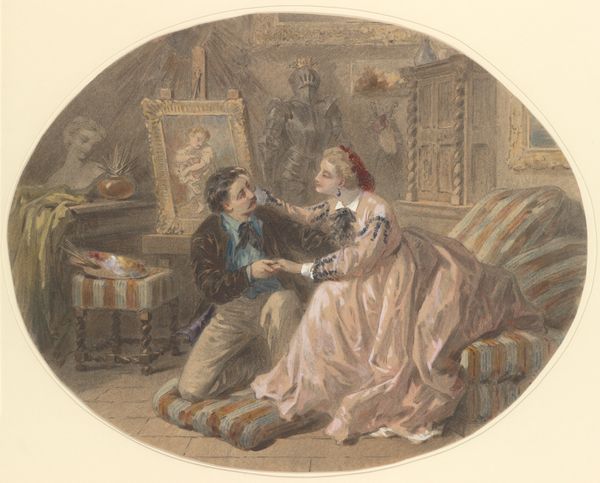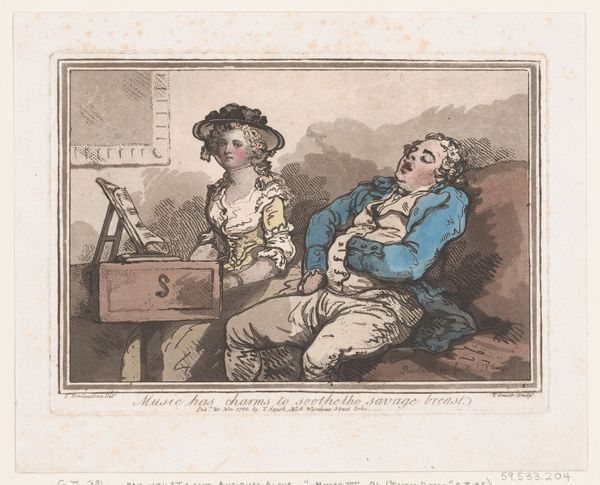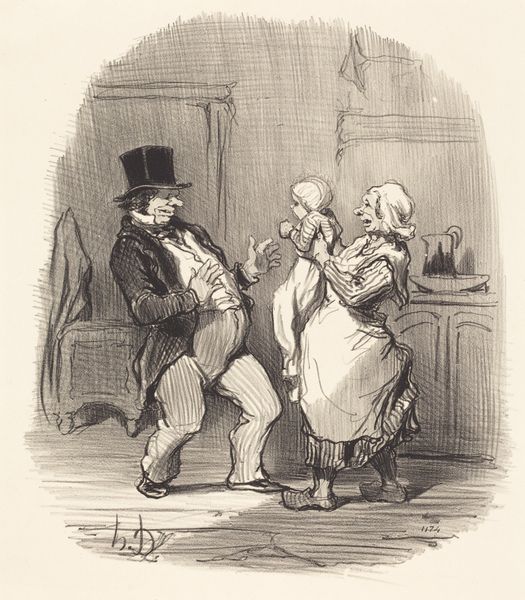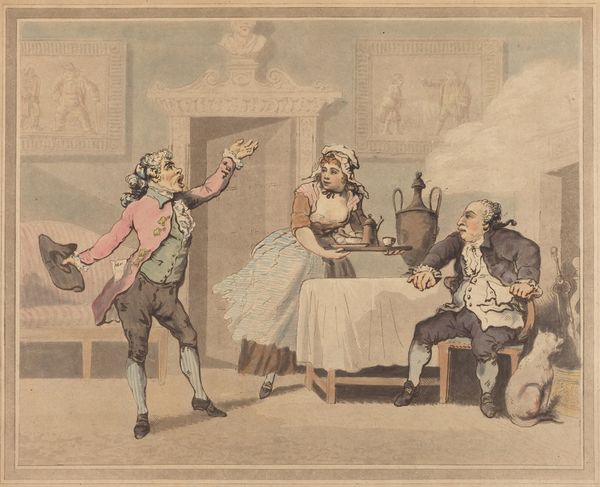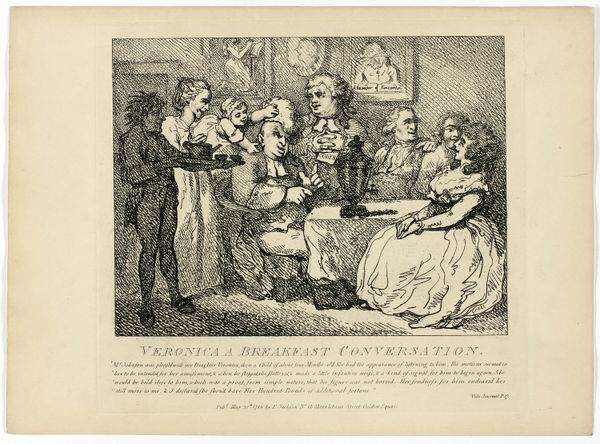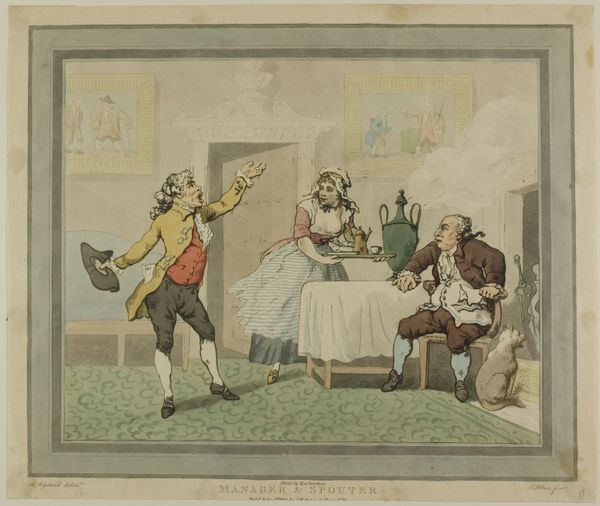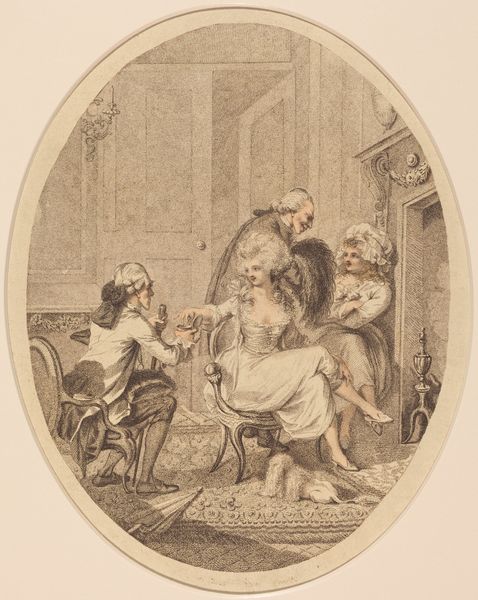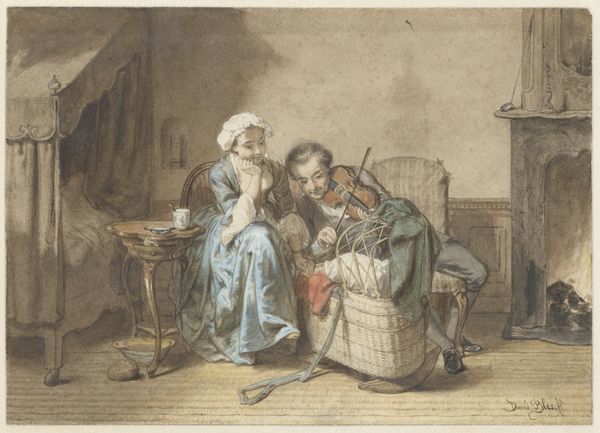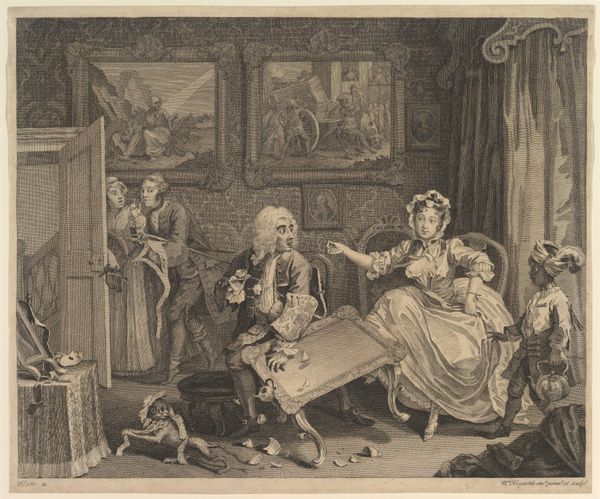
drawing, coloured-pencil, print
#
drawing
#
coloured-pencil
# print
#
impressionism
#
charcoal drawing
#
coloured pencil
#
men
#
genre-painting
#
watercolor
Dimensions: Oval sheet: 13 1/8 x 17 11/16 in. (33.3 x 44.9 cm)
Copyright: Public Domain
Curator: This piece, "Un Mari Pour Rire," which roughly translates to "A Husband For Laughing," dates between 1860 and 1905 and is attributed to Paul-Emile-Anthony Morlon. It's currently held at the Metropolitan Museum of Art. Editor: It’s immediately striking—the contrast between the sharply rendered foreground figures and the blurred chaos of the dancers in the background. There’s a very theatrical, almost staged quality to it. Curator: Exactly. Genre paintings like this gained traction precisely for their depiction of social mores. It allows us, from our present vantage point, to observe social gatherings from centuries past. Notice how Morlon places these figures in a clear social context, complete with details on the social expectations apparent with their poses and surroundings. Editor: I’m drawn to the color palette, the muted browns and reds, and the technique. You get this sense of immediacy, like a snapshot of a specific moment in time. Also the balance – the male figure grounding the left, weighed by the trunk versus the poised posture of the female that adds lightness, it all creates visual balance despite the disparate emotions each seems to exude. Curator: Consider the role of dance halls during this period. They functioned as social mixers and matchmakers but also highlighted anxieties surrounding marriage. We must consider how access was a societal privilege not afforded to all at that time and what a drawing like this would signal. Editor: And the central figures' narrative seems so accessible. His demeanor hints at boisterous camaraderie; her cool reserve practically broadcasts detachment. And while on a purely formal basis, her elaborate dress contrasts against his simpler garb creating a captivating, opposing focus between male and female. Curator: Right. The dynamic Morlon portrays tells its own silent story. It gives rise to many questions about courtship, social roles, and even the performativity inherent in finding a partner. The details Morlon included certainly bring light to historical events and values in social spaces. Editor: I leave contemplating how even in rendering societal expectation and social settings in that era through form and balance, some expectations like courtship continue.
Comments
No comments
Be the first to comment and join the conversation on the ultimate creative platform.

